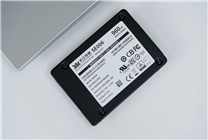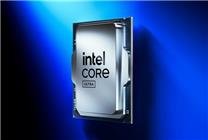Summary:
- AMD’s upcoming Ryzen processors will leverage TSMC’s advanced 2nm and 3nm manufacturing processes, marking a significant evolution in chip design.
- The Zen 6 architecture will feature enhanced capabilities with a focus on integrated functions and increased core efficiency.
- Mass production of the 2nm technology is expected to commence in Q3 2026, aligning with the anticipated launch timeline for new Ryzen CPUs.
AMD’s Next-Generation Ryzen Processors: A Technological Leap Forward
On September 3, recent insights revealed that AMD’s forthcoming Ryzen processor, built on the next-generation Zen 6 architecture, will utilize TSMC’s cutting-edge manufacturing processes—specifically, the N2P “2nm” technology for the Computing Chip Die (CCD) and the N3P “3nm” technology for the Input/Output Die (IOD).
Currently, the Ryzen CPUs operating on the Zen 5 architecture rely on a 4nm process for the CCD and a 6nm process for the IOD. This significant upgrade not only underscores AMD’s commitment to enhancing performance but also reflects an industry-wide shift towards smaller, more efficient process nodes.
Zen 6 Architecture Details
In the Zen 6 architecture, the IOD encompasses critical input/output functionalities, such as the memory controller, USB interfaces, PCIe lanes, and integrated graphics. Meanwhile, the CCD will host the Zen 6 cores, with each core complex containing 12 cores, 24 threads, and a substantial 48MB of L3 cache. This architecture aims to boost multitasking capabilities, improve power efficiency, and enhance overall system performance.
The introduction of these advanced technologies signifies AMD’s strategic response to keep pace with competitors, particularly as Intel prepares to launch its Nova Lake desktop CPUs around the same timeframe. However, the key distinction for AMD lies in its decision to maintain support for the existing AM5 platform, allowing for a smoother transition for consumers looking to upgrade without overhauling their entire system.
Timeline and Production Expectations
Notably, the N2P process is expected to begin mass production in the third quarter of 2026. This timeline indicates that the Zen 6-based Ryzen CPUs might be showcased as early as late Q3 or into the fourth quarter of 2026. Such a schedule positions AMD to potentially capture market interest as consumers anticipate the latest advancements in processor technology.
Conclusion
As semiconductor technology continues to advance at a rapid pace, AMD’s strategic development of the Zen 6 architecture underscores its commitment to delivering powerful, efficient processors. By leveraging TSMC’s state-of-the-art manufacturing processes, AMD is poised to offer significant improvements in performance, enabling users to meet the demands of increasingly complex applications and workloads.
As the 2026 launch approaches, both enthusiasts and professionals alike will be eager to see how AMD’s innovations translate into real-world performance—potentially reshaping the landscape of computing power.









